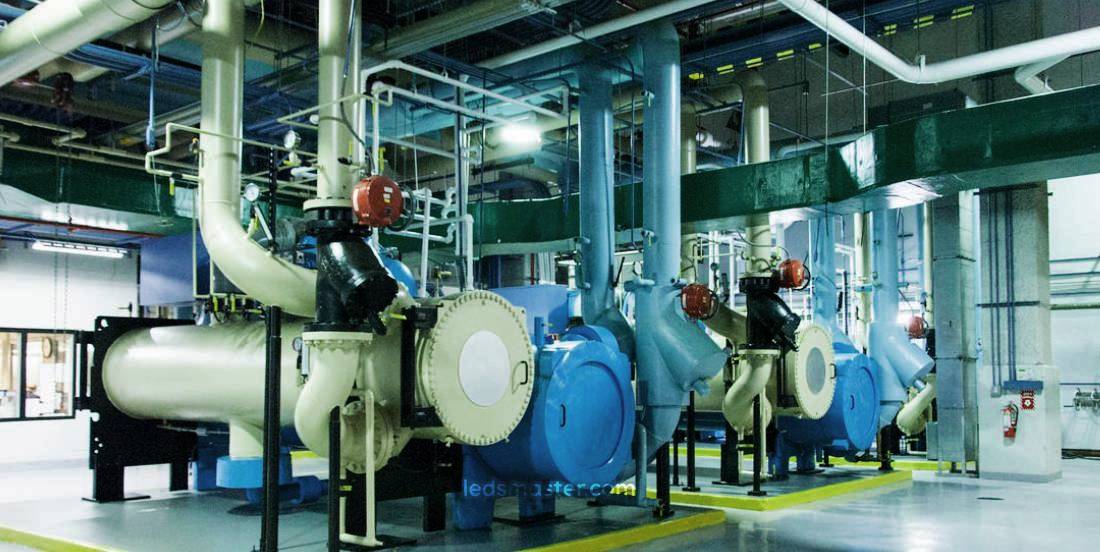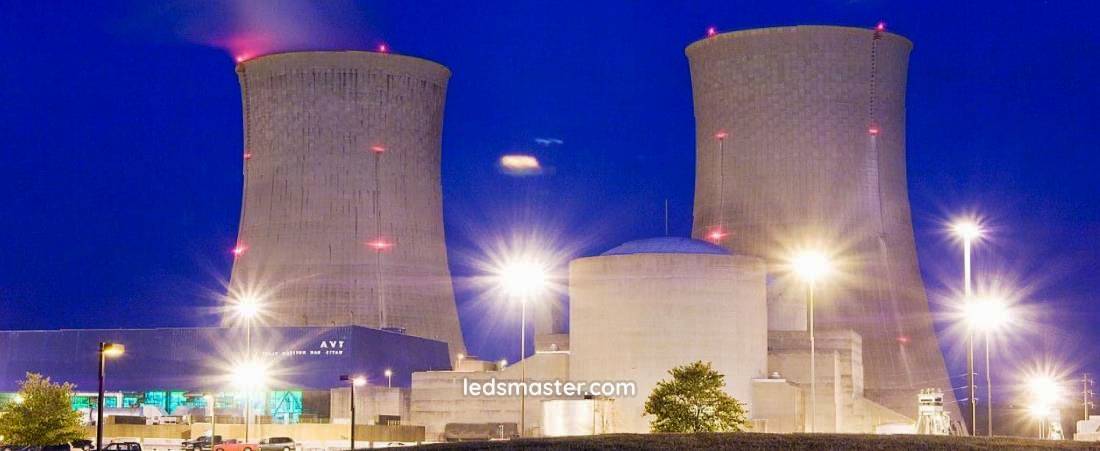It illuminates vast turbine halls and intricate control rooms, ensuring that every task is performed with precision and safety. As power plants evolve to meet modern demands, effective lighting has become not just a necessity, but a critical factor in enhancing operational efficiency and safety. From the gleam of LED fixtures to the bright glow of high-intensity discharge lights, the choices made in lighting design significantly impact the working environment.
Get your complimentary lighting design today
The unique environments of power generation facilities require careful consideration of various factors to create an optimal lighting plan. By understanding the specific needs of different areas within a power plant, designers can implement lighting solutions that enhance visibility, support operational tasks, and comply with regulatory requirements.
Table of Contents
TogglePower plants can be categorized into several types, including fossil fuel plants, nuclear power plants, and renewable energy facilities such as solar, wind, and hydroelectric plants. Each type presents unique challenges and requirements for lighting design.
Fossil fuel plants, which burn coal, natural gas, or oil to generate electricity, often feature expansive indoor and outdoor areas that require high levels of illumination. The combustion process and associated machinery necessitate well-lit environments to ensure safe operations. Nuclear power plants, with their stringent safety regulations, require specialized lighting systems that provide reliable illumination while also considering radiation shielding. Renewable energy facilities, including solar farms and wind farms, may have less demanding lighting needs due to their reliance on natural light, but they still require effective lighting for maintenance and safety during nighttime operations.
The diverse environments within power plants dictate specific lighting needs. For instance, indoor areas such as control rooms, turbine halls, and maintenance workshops must have adequate lighting to facilitate precision work and enhance worker safety. In contrast, outdoor areas, including storage yards and access roads, require lighting solutions that provide sufficient visibility without causing glare or light pollution.
Different tasks performed in various locations within the plant influence the type and intensity of lighting needed. Areas where detailed inspections and maintenance occur may require higher lux levels to ensure optimal visibility, while pathways and access routes may necessitate softer, evenly distributed light to promote safe movement.

Safety is a primary consideration when designing lighting for power plants. Regulatory bodies impose guidelines and standards that lighting systems must meet. These include requirements for minimum illumination levels in work areas, the use of emergency lighting, and the placement of exit signage.
Emergency lighting serves as a backup system that activates during power outages, ensuring that personnel can navigate safely. Exit signs, illuminated clearly, guide workers to emergency exits in the event of a crisis. Incorporating these elements into the lighting design not only meets compliance but also enhances overall safety within the facility.
Determining the appropriate lux levels for different areas is a fundamental aspect of power plant lighting design. Lux is a measure of illumination, indicating the amount of light falling on a surface. Specific tasks and activities dictate the required lux levels for various areas within the plant.
For example, areas designated for complex assembly or maintenance work may require higher lux levels, typically ranging from 300 to 750 lux, to ensure that workers can perform tasks accurately and safely. In contrast, general walkways and outdoor access paths may only need around 50 to 100 lux, as the focus is on safety rather than detailed work.
Factors that influence lux requirements include the nature of tasks being performed, the duration of work, and the age of the workforce. Older workers may require higher illumination levels due to natural declines in vision, making it vital to consider these aspects when designing a lighting plan.
Achieving uniform lighting distribution is essential for preventing shadows and glare, which can create hazards in the workplace. Uneven lighting can lead to accidents, particularly in high-traffic areas or places where precision work occurs.
Designers often employ techniques to optimize lighting distribution. Fixture placement is a key consideration; strategically positioning lights can enhance uniformity. The use of various types of fixtures, including high-bay and low-bay lights, can also aid in achieving an even spread of light across different areas of the plant.
Moreover, lighting design should account for surface reflectivity. Surfaces with high reflectivity can amplify light distribution, while those with low reflectivity may require additional illumination to achieve the desired lux levels.

Light Emitting Diodes (LEDs) have revolutionized lighting design in power plants due to their energy efficiency, longevity, and versatility. LEDs consume significantly less energy compared to traditional lighting options, which translates to lower operational costs and reduced environmental impact. The lifespan of LED fixtures often exceeds 50,000 hours, making them a reliable choice for power plant applications.
In addition to energy savings, LEDs offer a wide range of color temperatures, allowing designers to choose lighting that best suits specific tasks and environments. For instance, cooler color temperatures may enhance visibility in technical areas, while warmer temperatures can create a more comfortable atmosphere in break rooms and social spaces.
LEDs also generate minimal heat, which can be advantageous in environments where temperature control is crucial. By reducing heat output, LEDs help maintain optimal operating conditions within the facility, particularly in areas housing sensitive equipment.
High-Intensity Discharge (HID) lighting is another option often used in power plants. HID lights produce bright illumination and are available in various types, including metal halide, high-pressure sodium, and mercury vapor lamps. These fixtures are typically used in large spaces such as outdoor areas and warehouse-like environments due to their high output.
While HID lights offer advantages in terms of brightness, they have some drawbacks. They generally consume more energy than LEDs and have a shorter lifespan, often lasting around 15,000 hours. Moreover, HID fixtures require a warm-up period to reach full brightness, which can be a disadvantage in facilities requiring immediate illumination.
Fluorescent lighting remains a popular choice for various applications within power plants. These fixtures provide adequate illumination for general areas and can be installed in grid layouts, making them suitable for office spaces and maintenance workshops. Fluorescent lights are energy-efficient, but they typically have a shorter lifespan than LEDs and may require more frequent replacement.
Induction lighting, a newer technology, operates similarly to fluorescent lights but offers extended lifespans and better efficiency. Induction lights are highly durable and can last up to 100,000 hours, making them suitable for areas requiring minimal maintenance.
Integrating smart lighting solutions into power plant design allows for enhanced control and flexibility. These systems can be linked with building management systems (BMS) to optimize energy use and respond to changing operational needs.
Smart lighting solutions often include features such as occupancy sensors and scheduling capabilities, enabling lights to adjust automatically based on real-time requirements. By dimming or turning off lights in unoccupied areas, these systems can significantly reduce energy consumption.
Motion sensors play a pivotal role in power plant lighting design. These devices detect movement and automatically activate lights when personnel enter an area. This functionality is particularly valuable in spaces that may not require constant illumination, such as storage areas or maintenance zones.
Dimming features, which allow lights to adjust brightness based on ambient conditions or time of day, contribute to energy savings and comfort. By reducing light levels during low-activity periods, facilities can maintain adequate safety levels while minimizing energy use.
The design of lighting systems in power plants involves a comprehensive understanding of the unique requirements presented by different environments. By focusing on safety, compliance, and the specific needs of various areas, effective lighting solutions can be achieved. The selection of appropriate lighting technologies, including LEDs, HID, and fluorescent options, plays a significant role in ensuring operational efficiency.
Control systems that incorporate smart technology further enhance the effectiveness of lighting solutions. By adopting these strategies, power plants can create environments that not only meet regulatory requirements but also promote worker safety and operational productivity. The continued evolution of lighting technologies and design practices will support the ongoing improvement of power plant operations, fostering a safer and more efficient workplace.